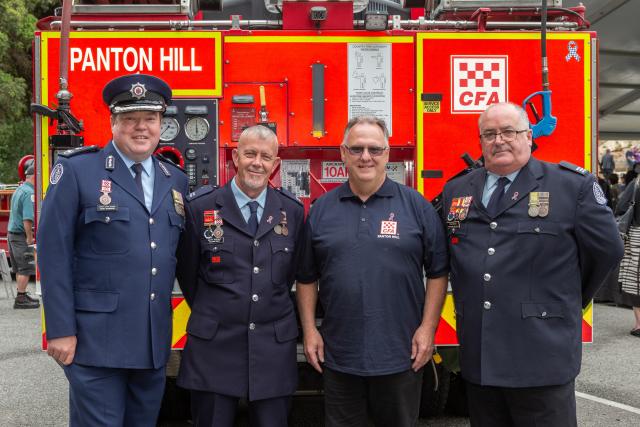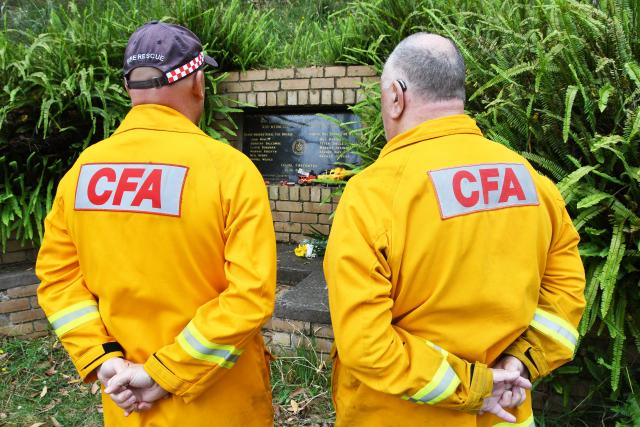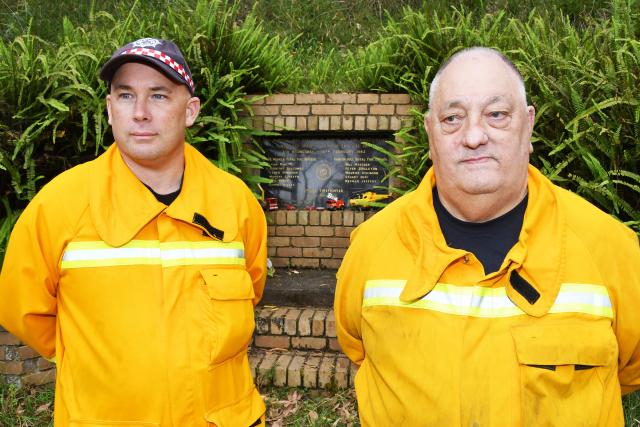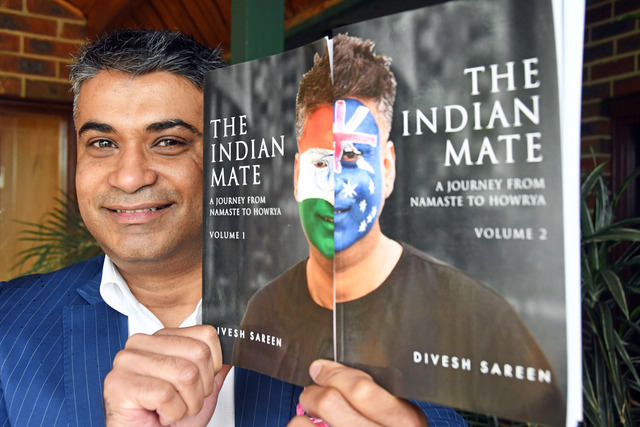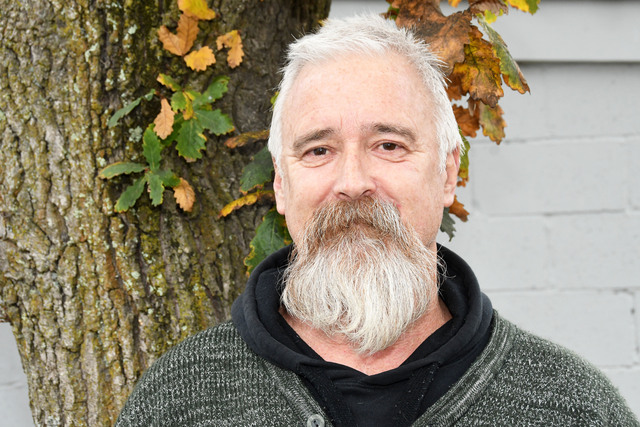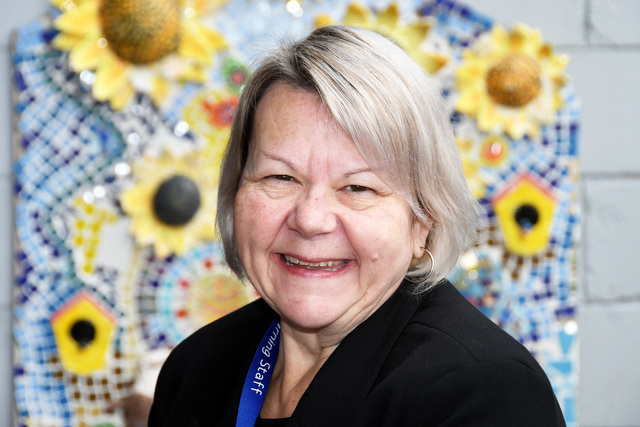Each year, on the night of 16 February, members of the Narre Warren and Panton Hill Fire Brigades, along with family members of the fallen victims of Ash Wednesday, journey to the hill tops of Upper Beaconsfield, off St Georges Road, for a vigil to commemorate the 12 CFA lives lost from their crews in 1983.
The weather is always eerily similar, according to Narre Warren CFA Captain Travis Carter – quite warm and a little breezy.
“You feel it when you come up here on that night, as the sun sets in the background and you can hear the trees but you can’t see them anymore,” Captain Carter said.
“There’s a certain feeling you cant really explain unless you’re here.”
It’s a profound opportunity for the brigades to pause and reflect on the horror summer’s day in 1983.
“Its a bit of a pilgrimage up here each year.
“We set up at the top with a bit of catering and then everyone just really quietly comes down, form a semicircle and recite the firefighters prayer.
“I think for the brigade, the main driver is to show the families that we’ll never forget…that’s what it’s really about.”
“It’s really about saying thank you to the families for what they’ve had to endure for the brigade and for the CFA and for the community, so that’s the way we look at it.
“It’s just an opportunity for us to reflect, learn and feel.”
The connection between the Narre Warren and Panton Hill Fire Brigades was forged on the evening of Ash Wednesday, when a tanker of six Narre Warren CFA members and a tanker of five Panton Hill CFA members were fighting spot fires on a forest track in the valleys of Upper Beaconsfield.
Tragically, the crews were met with a fury of fire, which is said to have travelled 500 metres up the valley in just 11 seconds.
In the days following, both tankers were found burnt out, with all volunteers on board deceased.
“[Panton Hill] shares this experience with us and we’re definitely very well connected because of that, we’re joined at the hip,” Captain Carter said.
“We’re very different brigades but we shared the same experience together.”
Current Panton Hill Captain Simon Wallace agreed the connection between the Upper Beaconsfield, Narre Warren and Panton Hill Brigades is unbreakable.
“There’s definitely been a lot of camaraderie between them, that’s for sure,” he said.
“I think it’s a reminder that you’re not infallible, that things can go wrong.
“I would like to think as a brigade we’re a bit more cautious about what we do, and make sure we’re prepared. We have that everlasting reminder.”
Both captains said they feel a responsibility to make sure the Ash Wednesday legacy continues, both through commemoration and education to ensure a similar tragedy can be prevented in the future.
“Every single new recruit that joins we sit down with them and talk about Ash Wednesday so people understand from the very start,” Captain Wallace said.
A large part of that education for current CFA members is sourced from people like Colin Booth, a life member of the Narre Warren Brigade, who was on duty on Ash Wednesday.
“We rely on guys like Colin to come down the track with our members and talk to them and tell them the story and then make sure that, as a brigade, we don’t get in that situation again,” Captain Carter said.
“It’s an honour to have him as an educator on that topic.”
The community’s role in fire safety is also a key element in the prevention of another bush fire tragedy, says Captain Carter.
“From a fire safety perspective, I’d say the most important thing is for people to be prepared so that we don’t have to put ourselves into dangerous situations to help them.
“That’s the key, if we don’t have to come down the road in the first place, because everyone’s been evacuated, that helps everybody.
“If [community members are] prepared and they leave early, follow the CFA’s online instructions, know where they’re going, what their plans are and what the weather conditions are, that’s probably the only way the community can help – to make sure they’re in a safe position when the fire comes.”

